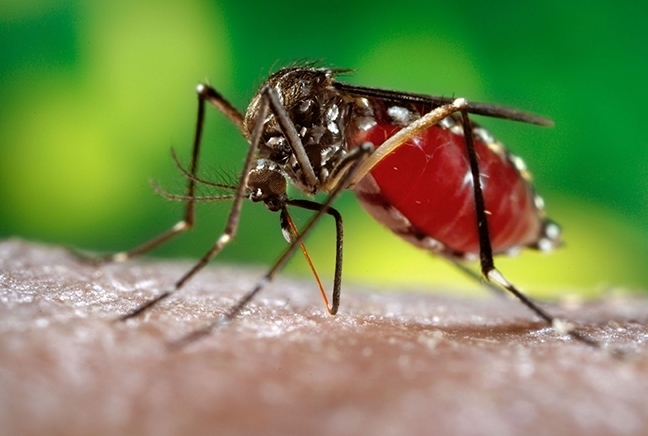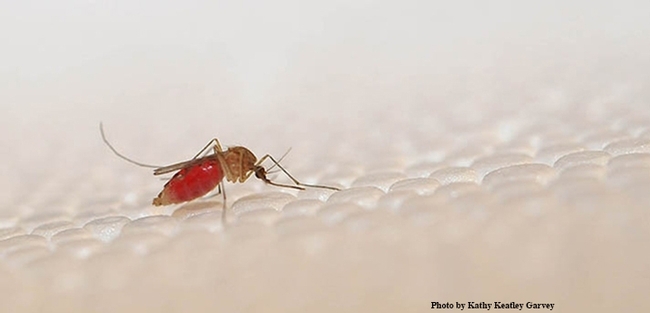- Author: Kathy Keatley Garvey
Ah, Saturday, April 17. It's the 107th Annual UC Davis Picnic Day! What's a picnic without bugs?
This year's event, all virtual, is themed "Discovering Silver Linings," and you can do just that by watching the pre-recorded videos and by participating in the Zoom sessions. Check out the Picnic Day schedule of events which include entomological exhibits and talks from the UC Davis Department of Entomology and Nematology, Bohart Museum of Entomology and the UC Davis Graduate Student Association.
New additions to the line-up (featured on the Bohart Museum of Entomology website), involve what you could call "The good, the bad and the bugly." Blue orchard bees, tsetse flies and mosquitoes are spotlighted in UC Davis research-based videos created by KQED's Deep Look series and presented by PBS Digital Studios. Each runs about four minutes.
Here are the KQED productions:
- Watch this Bee Build Her Bee-Jeweled Nest, featuring blue orchard bees, the project of UC Davis doctoral student Clara Stuligross.
- A Tsetse Fly Births One Enormous Milk-Fed Baby, showcasing the work of medical entomologist Geoffrey Attardo, assistant professor, UC Davis Department of Entomology and Nematology.
- This Dangerous Mosquito Lays Her Armored Eggs--in Your House, involving the Aedes aegypti mosquitoes that the Attardo lab studies.
Clara Stuligross, Doctoral Student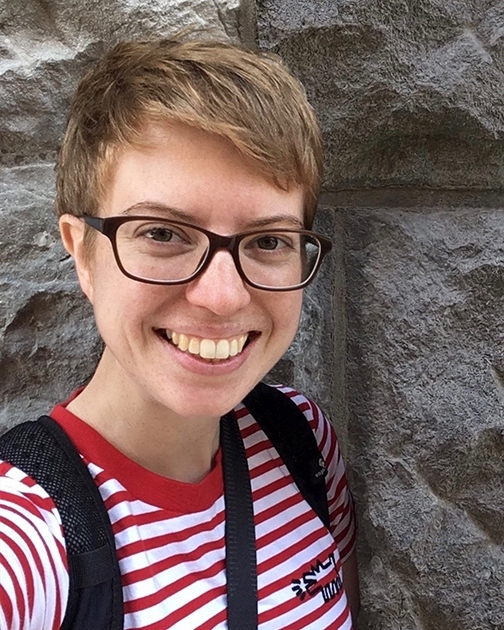
They exposed the bees to the neonicotinoid insecticide imidacloprid, widely used in agriculture, and found that the combined threats—imidacloprid exposure and the loss of flowering plants—reduced the bee's reproduction by 57 percent, resulting in fewer female offspring.
Other scientists have conducted similar research on honey bees, but this is the first comparable research on wild bees in field or semi-field conditions. The blue orchard bee, nicknamed BOB, is a dark metallic mason bee, smaller than a honey bee. It is prized for pollinating almond, apple, plum, pear, and peach trees. California almond growers often set up bee boxes or "bee condos" for blue orchard bees to aid in honey bee pollination. In the wild, the bees nest in reeds or natural holes.
Update? "We are currently working on a follow-up study to investigate potential carryover effects of past insecticide exposure on the same bee population, as well as how repeated pesticide exposure over multiple years impacts bee population growth," Stuligross said today.
Geoffrey Attardo, Medical Entomologist-Geneticist 
What many people do not know: "Female tsetse flies carry their young in an adapted uterus for the entirety of their immature development and provide their complete nutritional requirements via the synthesis and secretion of a milk like substance," Attardo says.
Attardo led landmark research published Sept. 2, 2019 in the journal Genome Biology that provides new insight into the genomics of the tsetse fly. The researchers compared and analyzed the genomes of six species of tsetse flies. Their research could lead to better insights into disease prevention and control.
The Deep Look episode on mosquitoes, "This Dangerous Mosquito Lays Her Armored Eggs-- in Your House," deals with the ability of Aedes aegypti eggs to survive out of water. Wrote the producers: "The Aedes aegypti mosquito, which can transmit dengue fever and Zika, makes a meal of us around our homes. And her eggs are hardy. They can dry out, but remain alive for months, waiting for a little water so they can hatch into squiggly larvae."
- Author: Kathy Keatley Garvey

The species has now reached at least 17 California counties and its successful spread may be linked to its resistance to pyrethroids, according to newly published UC Davis research examining genetic markers of resistance at five state locations.
The work, published in the current edition of Parasites & Vectors, a BioMed Central open-access medical journal, focuses on “determining how informative well-established genetic markers of resistance to pyrethroids are in predicting the resistance phenotype of individual mosquitoes of Aedes aegypti within a population,” said Attardo, the lead author.
“Specifically, we generated mosquito colonies from invasive A. aegypti populations from four locations in the Central Valley (Dinuba, Clovis, Sanger and Kingsburg) and from collections in the Greater Los Angeles Area,” he said. “Mosquitoes from these populations have all demonstrated resistance to pyrethroid-type insecticides and we think this may be part of the reason why these mosquitoes have been so successful in spreading throughout California.”
A. aegypti transmits such viruses as dengue, Zika, chikungunya, and yellow fever. Despite California's aggressive surveillance and treatment efforts, this species presents a “significant challenge to local control agencies,” the nine-member team wrote in their research paper, “Frequency of Sodium Channel Genotypes and Association with Pyrethrum Knockdown Time in Populations of Californian Aedes aegypti.“
The paper is online and publicly accessible at https://bit.ly/3vmUxXR.
“What was interesting was that while all the mosquitoes from California show resistance to pyrethroids, there is a lot of variability from one individual to the next in terms of the level of resistance, even when they are carrying genetically identical resistance mutations,” Attardo said. “In particular, there seem to be two levels of resistance in these populations. The two levels seem to represent a resistant group and a super resistant group. However, the proportions of resistant/super-resistant differ in the sampled mosquitoes from population to population.”
Of particular interest was that mosquitoes carrying the resistance mutations at all five genetic locations were very resistant, he said. “However, there was also a large amount of unexplained variability in terms of the knockdown phenotypes demonstrated by mosquitoes of the same age and rearing conditions. We compared the knockdown times of mosquitoes positive for all five resistance mutations from different populations and found that these mutations account for only a proportion of the observed level of resistance. We believe that the unexplained variability is likely being mediated by the presence or absence of an undefined resistance mechanism.”
Although A. aegypti was first detected in California in 2013, researchers believe that its arrival involved multiple introductions. Populations in Southern California are thought to have crossed the border from Mexico, while Central Valley populations may have been introduced, in part, from the southeastern United States.
“Upon detection in 2013, the Consolidated Mosquito Abatement District implemented an integrated vector control management strategy which involved extensive public education, thorough property inspections, sanitation, insecticide treatment at larval sources and residual barrier spraying with pyrethroids,” the authors wrote. Despite their efforts, the species successfully overwintered and continued to spread, implicating that it arrived in California with genetic mutations “conferring resistance to the type I pyrethroid insecticides applied for vector control in California.”
The co-authors include former UC Davis mosquito researcher Yoosook Lee, now at the University of Florida-Florida Medical Entomology Laboratory, Vero Beach; research entomologist Anthony Cornel and staff research associate Katherine Brisco of the Mosquito Control Research Laboratory, Kearney Agriculture and Extension Center and UC Davis Department of Entomology and Nematology; and Lindsey Mack, Erin Taylor Kelly, Katherine Brisco, Kaiyuan Victoria Shen, Aamina Zahid, and Tess van Schoor, all with the UC Davis Department of Entomology and Nematology.
For more information and photos, see news story on "UC Davis Researches Examine Pyrethroid Reistance in Spread of Aedes aegypti," on the UC Davis Department of Entomology and Nematology's website.
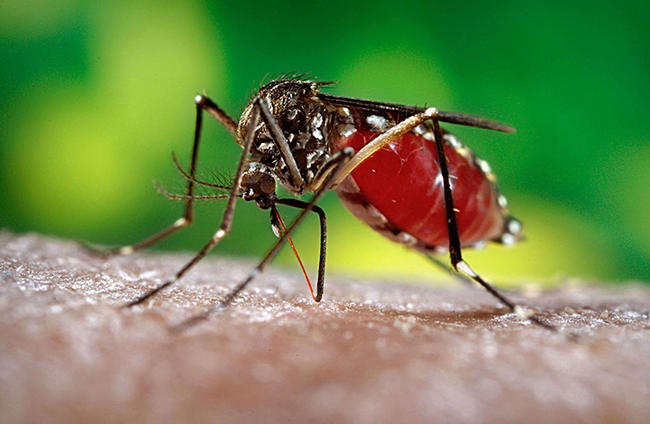
- Author: Kathy Keatley Garvey
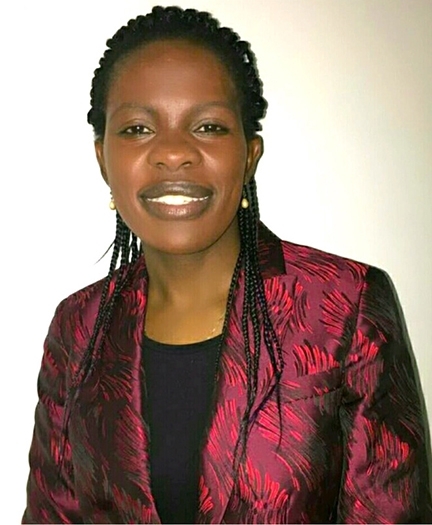
Mosquito researcher Maria Onyango, a postdoctoral associate at the New York State Department of Health, Albany, N.Y., will speak on "The Impact of Zika Virus Infection on the Metabolites and Microbiome of Aedes albopictus" from 4:10 to 5 p.m. The Zoom seminar is open to all interested persons; click here for the form to register and obtain the Zoom link.
Aedes albopictus, known as the Asian tiger mosquito, is a close relative of Aedes aegypti, the yellow fever mosquito. Both invasive species are moving through California. (See California report of the two species, and the Center for Disease Control and Prevention's estimate potential range of the two species in the United States.)
Medical entomologist-geneticist Geoffrey Attardo of the UC Davis Department of Entomology and Nematology, who collaborates with Onyango, will host the seminar.
"Dr. Maria Onyango works on the biology underlying interactions between arboviruses (Zika virus), vector mosquitoes and the associated microbiome," Attardo said.
Aedes aegypti Detected in Yolo County
The Sacramento-Yolo Mosquito and Vector Control District recently announced the detection of Aedes aegypti in Yolo County: an adult female found Sept. 15 in a trap near East and Main streets, Winters, and an adult female found in in a trap at Pioneer Park near El Macero, Davis, on Sept. 30.
Aedes aegypti, a day-biting mosquito originating from the forests of Uganda, can transmit the Zika virus, yellow fever, dengue, and chikungunya. However, California has no documented cases of this species transmitting the Zika virus, dengue or chikungunya.
Attardo related that the first detection of Aedes aegypti in California occurred in 2013 and was described in these papers:
- Metzger, M.E.; Hardstone Yoshimizu, M.; Padgett, K.A.; Hu, R.; Kramer, V.L. Detection and Establishment of Aedes aegypti and Aedes albopictus (Diptera: Culicidae) Mosquitoes in California, 2011-2015. J. Med. Entomol. 2017, 54, 533–543, doi:10.1093/jme/tjw237.
- Gloria-Soria, A.; Brown, J.E.; Kramer, V.; Hardstone Yoshimizu, M.; Powell, J.R. Origin of the dengue fever mosquito, Aedes aegypti, in California. PLoS Negl. Trop. Dis. 2014, 8, e3029, doi:10.1371/journal.pntd.0003029.
"Since then it has been determined that there have likely been at least two separate introductions of Aedes into California--possibly three but that requires additional study," Attardo says. "The result of this is that there are two genetically distinct populations of Aedes in California. One is based in Southern California in the Greater Los Angeles area as well as areas to the East, like Riverside and Coachella valleys. The second population is distributed throughout the Central Valley. These two populations are genetically distinct and we have developed a genetic assay to differentiate the two populations. We have been working with local abatement agencies (Winters, Sacramento/Yolo and Shasta counties) to test their collected mosquitoes to determine which population they resemble at the genetic level. Each year has shown Aedes aegypti spreading farther into parts of California where it has never been seen before."
- Pless, E.; Gloria-Soria, A.; Evans, B.R.; Kramer, V.; Bolling, B.G.; Tabachnick, W.J.; Powell, J.R. Multiple introductions of the dengue vector, Aedes aegypti, into California. PLoS Negl. Trop. Dis. 2017, 11, e0005718, doi:10.1371/journal.pntd.0005718.
- Lee, Y.; Schmidt, H.; Collier, T.C.; Conner, W.R.; Hanemaaijer, M.J.; Slatkin, M.; Marshall, J.M.; Chiu, J.C.; Smartt, C.T.; Lanzaro, G.C.; et al. Genome-wide divergence among invasive populations of Aedes aegypti in California. BMC Genomics 2019, 20, 204, doi:10.1186/s12864-019-5586-4.
"We recently ran our genetic test on mosquitoes that we collected from two different sites in Citrus Heights (divided by Route 80) and actually found that the two groups appear to represent both the Greater Los Angeles and the Central Valley populations, with each group specific to one side or the other of Route 80," Attardo said. "This is unpublished data and we are continuing to process additional samples of collected Aedes to reinforce these findings and understand the dynamics of how these mosquitoes are spreading."

The data suggests "that both populations are moving throughout California and are possibly being facilitated by human activities," Attardo said. "Aedes aegypti which was originally a mosquito that developed in tree holes has evolved to be a very human centric mosquito that has learned to thrive in man-made breeding sites. This may be the key to their success and their ability to move so quickly throughout the state."
Attardo emphasized that "these mosquitoes do not naturally carry these viruses and must acquire them by blood feeding on an infected person, successfully developing an infection and then biting another person. So far there have been no outbreaks of these diseases, but now that Aedes aegypti is here, the potential for an outbreak of dengue, Zika, chikungunya or yellow fever is a possibility. Infected people coming from countries where these viruses are endemic could serve to seed the viruses into Californian populations of Aedes which would obviously be a bad thing. The ongoing environmental changes resulting from climate change will likely allow these mosquitoes and others to move into previously uninhabitable areas and it is going to significantly change how we assess risk and management of mosquito-borne disease risks in the United States and around the world. California is just one example of this issue."
Aedes albopictus in California
Along with seven other scientists, Attardo and Onyango co-authored a research article in the Oct. 2nd edition of Frontiers in Microbiology on "Zika Virus Infection Results in Biochemical Changes Associated With RNA Editing, Inflammatory and Antiviral Responses in Aedes albopictus."
Aedes albopictus, also a day-biting mosquito, can transmit Zika and other infectious diseases. "The Zika virus infected more than 1 million people during an epidemic that began in 2015 in Brazil," according to this report, Invasive Mosquito Species Plunge Deeper Into California. The virus also can spread during sex.
Onyango holds two degrees from the University of Nairobi, Kenya: a bachelor of science degree in biochemistry and zoology and a master's degree in applied parasitology. She received her doctorate in veterinary entomology from Deakin University and Australian Animal Health Laboratory, Commonwealth Scientific and Industrial Research Organisation (CSIRO), and then completed postdoctoral training at the Yale School of Public Health, Department of Epidemiology of Microbial Diseases.
Cooperative Extension specialist and assistant professor Ian Grettenberger coordinates the fall seminars. For any technical issues regarding the seminar, contact Grettenberger at imgrettenberger@ucdavis.edu

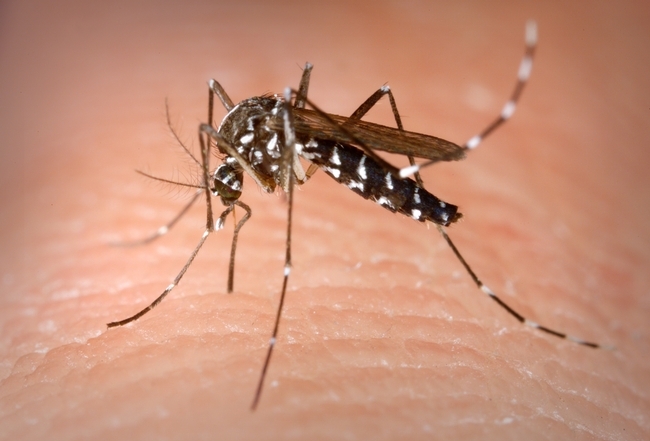
- Author: Kathy Keatley Garvey

She's been making her mark in all three since enrolling in 2016 in the UC Davis Department of Entomology and Nematology's Ph.D. program, with a designated emphasis in the biology of vector-borne diseases.
Winokur, who studies with major advisor Christopher Barker, associate professor, Department of Pathology, Microbiology and Immunology, School of Veterinary Medicine, is a newly selected fellow of Professors for the Future (PFTF).
This is a program sponsored by UC Davis Graduate Studies “to recognize and develop the leadership skills of outstanding graduate students and postdoctoral scholars who have demonstrated their commitment to professionalism, integrity, and academic service.”
As a fellow, she will receive a stipend of $3000. Traditionally, approximately 12 fellows annually are selected to participate in the yearlong program, launched in 1992.
The PFTF program is designed to prepare UC Davis doctoral students and postdoctoral scholars “for an increasingly competitive marketplace and a rapidly changing university environment,” according to PFTF co-directors Ellen Hartigan-O'Connor, acting associate dean of UC Davis Graduate Studies, and Teresa Dillinger, academic administrator.
During the year, the fellows will receive formal training-in-teaching methods and course design; participate in a seminar course on ethics and professionalism, and meet regularly for roundtable panel discussions to promote their professional development, intellectual growth and leadership skills, the directors said.
The fellows will work on projects of their own design to enhance their graduate or postdoctoral experience and professional development of their colleagues. They summarize their projects in end-of-the-year reports. (See 2019-2020 fellows.)
Winokur titled her successful proposal, “Addressing Financial Barriers to Participation in STEM (Science, Technology, Engineering and Mathematics).”
“Graduate students perform many roles as researchers, mentors, educators, communicators, service leaders, and humans,” wrote Winokur, who is president of the UC Davis Entomology Graduate Student Association. “Financial insecurity affects students' abilities to perform these roles well, and provides a leg up to students with financial support beyond a graduate student stipend. We know that diversity is important in academia; cultivating talent from folks across the social spectrum leads to innovative and appropriate solutions.”
“Addressing financial barriers to participation in STEM graduate programs will lead to more diverse and inclusive programs,” she wrote. “Further, financial insecurity affects those who enters graduate school in the first place; research experience is often required to be considered for acceptance into graduate school, which unfortunately is often offered in the form of unpaid research internships. This can filter out low-income students early, making academia even more elite than it already is.”
Winokur will collaborate with existing resources on campus to set up a series of workshops to address the issues, focusing on three points: (1) creative ways to fund your research (2) how to support your research mentees—why unpaid labor filters low income and other disadvantaged students, and (3) making your teaching cheaper—how to make education more accessible for low-income and other disadvantaged students.
“I've been interested in applying to the Professors for the Future program for a couple years,” she said. “This year, I feel that I am at a good point in my graduate career to develop my skills through the PFTF coursework and to contribute to the graduate student community through a PFTF project.”
Since 2016, the UC Davis doctoral student has developed her teaching, mentoring, course development, and leadership skills through various courses and programs, “which has led to a basic understanding of my teaching philosophy and pedagogy.” She aims to develop her skills to “further align with my core values of diversity, equity, and inclusion in the classroom and laboratory.”
Olivia grew up in Laguna Niguel, Calif. where she focused on science at the Dana Hills High School Health and Medical Occupations Academy. She holds a bachelor's degree, 2015, from Cornell University, where she majored in interdisciplinary studies, focusing on the environmental effects on human health. While at Cornell, she worked as an intern for the National Institutes of Health, working on climate change initiatives for the National Institute of Environmental Health Sciences and the Fogarty International Center.
Winokur holds a National Science Foundation Graduate Research Fellowship. She is a two-time recipient of the Bill Hazeltine Memorial Research Award, given annually to an outstanding UC Davis graduate student studying vector-borne diseases.
Winokur, who researches Aedes aegypti mosquitoes, is the co-author of research published in several journals, including PLOS Neglected Tropical Diseases. Her first first-author paper, “Impact of Temperature on the Extrinsic Incubation Period of Zika Virus in Aedes aegypti” was just published in March.
Since 2017, she has served as a volunteer with the California Department of Public Health's Vector-Borne Disease Section, assisting with hantavirus and plague surveillance by rodent trapping and testing.
Winokur mentors undergraduate students in the UC Davis Research Scholars Program in Insect Biology (RSPIB), founded and directed by faculty members Jay Rosenheim, Joanna Chiu and Louie Yang, UC Davis Department of Entomology and Nematology.
Active in STEM projects, Winokur co-founded GOALS (Girls' Outdoor Adventure in Leadership and Science) in 2017, a program that develops and runs free two-week summer science programs for high school girls and gender expansive youth from backgrounds underrepresented in STEM fields. The girls learn science, outdoor skills and leadership hands-on while backpacking in Sequoia National Park.
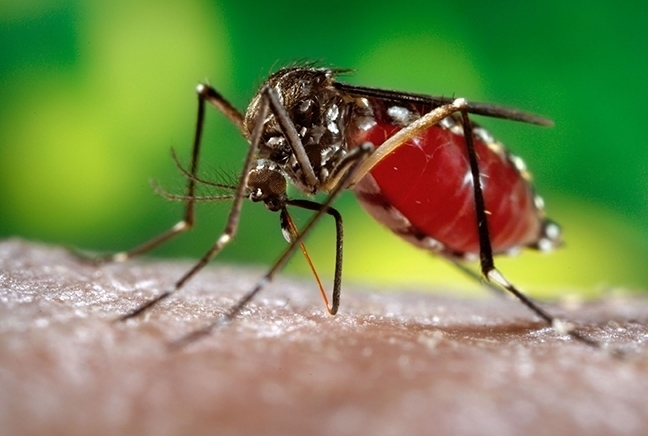
- Author: Kathy Keatley Garvey

They manage to find us, don't they? Even when we're doing our best to try to avoid them!
It's not so well-known that mosquitoes, both male and female, frequent plants to feed on nectar for energy.
And now UC Davis chemical ecologist Walter Leal and scientists Fangfang Zen and Pingxi Xu of the Leal lab have discovered that the odorant receptors from the southern house mosquito, Culex quinquefasciatus, and the yellow fever mosquito Aedes aegypti, are sensitive to floral compounds.
They deposited the manuscript in bioRxiv (pronounced "bio-archive"), a preprint server for life sciences; the paper is pending publication in the journal, Insect Biochemistry and Molecular Biology.
The manuscript: "Odorant Receptors from Culex quinquefasciatus and Aedes aegypti Sensitive to Floral Compounds."
The team, led by Leal, a distinguished professor in the Department of Molecular and Cellular Biology and a former chair of the UC Davis Department of Entomology, cloned the genes of several odorant receptors from the mosquitoes and tested them, using egg cells of Xenopus toads. They exposed the cloned receptors to different scent chemicals.

"We are delighted to find out how mosquitoes smell plant-derived compounds and are repelled by them," Leal said. "These findings may lead to the discovery of better repellents from natural sources."
"Mosquitoes rely heavily on the olfactory system to find a host for a bloodmeal, plants for a source of energy and suitable sites for oviposition," the scientists explained in their abstract. "Here, we examined a cluster of 8 odorant receptors (ORs), which includes one OR, CquiOR1, previously identified to be sensitive to plant-derived compounds. We cloned 5 ORs from Culex quinquefasciatus and 2 ORs from Aedes aegypti, ie, CquiOR2, CquiOR4, CquiOR5, CquiOR84, CquiOR85, AaegOR14, and AaegOR15 and then deorphanized these receptors using the Xenopus oocyte recording system and a large panel of odorants. 2-Phenylethanol, phenethyl formate, and phenethyl propionate were the best ligands for CquiOR4 somewhat resembling the profile of AaegOR15, which gave the strongest responses to phenethyl propionate, phenethyl formate, and acetophenone. In contrast, the best ligands for CquiOR5 were linalool, PMD, and linalool oxide. CquiOR4 was predominantly expressed in antennae of nonblood fed female mosquitoes, with transcript levels significantly reduced after a blood meal. 2-Phenylethanol showed repellency activity comparable to that of DEET at 1%. RNAi experiments suggest that at least in part 2-phenylethanol-elicited repellency is mediated by CquiOR4 activation."
Meanwhile, Leal is gearing up for the 2019 Entomological Society of America (ESA) meeting in St. Louis, Mo., where he will deliver the Founders' Memorial Award Lecture on “Tom Eisner — An Incorrigible Entomophile and Innovator Par Excellence,” at the awards breakfast on Tuesday, Nov. 19.
ESA officials selected Leal, an ESA fellow and internationally recognized chemical ecologist, for the global honor. Leal is the first UC Davis scientist selected to present the Founders' Memorial Lecture, although medical entomologist Shirley Luckhart of the University of Idaho, formerly of UC Davis, delivered the lecture in 2018.
The 7000-member ESA is the world's largest organization serving the professional and scientific needs of entomologists and people in related disciplines. ESA, founded in 1889, is headquartered in Annapolis, Md.
X
